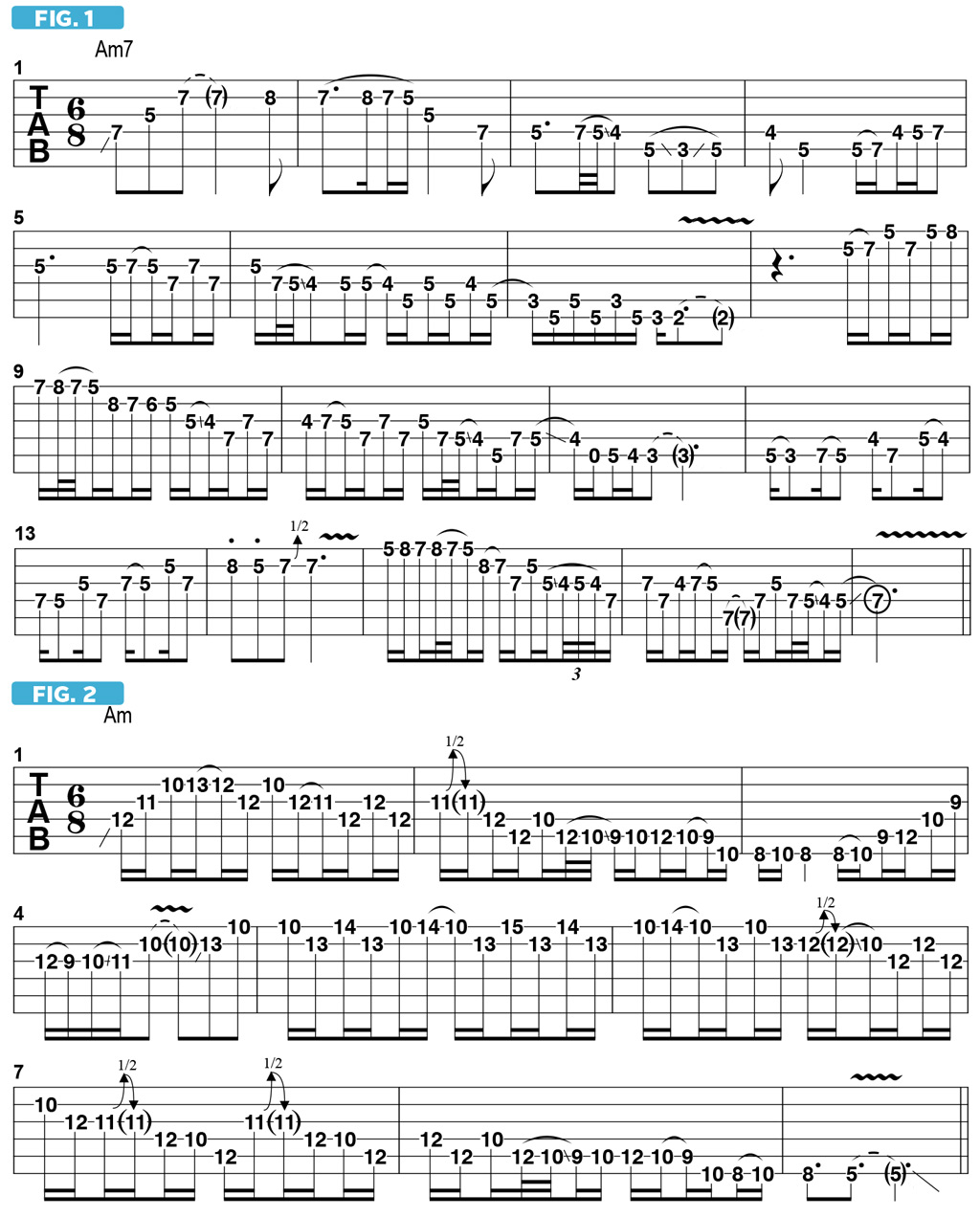Superimposing "IV-Chord" Licks Over the "I"
How to solo over a single-chord groove or a “I-IV” (one-to-four) vamp.
In just about every style of modern music — from rock to blues, funk, soul, country and metal — there will be occasions where you find yourself soloing over either a single-chord groove or a “I-IV” (one-to-four) vamp. A standard “jazz” approach is to reference chords other than the “one” chord while soloing, which serves to offer the soloist a wide range of musical possibilities and “colors” while also surprising the listener by pulling their ear in different and often unexpected directions.
If you’re wondering, “What is a ‘IV chord,’ and how do I figure out what that is?,” the answer is easily found by examining the major scale. In the key of G, the G major scale consists of the notes G A B C D E F#. A G major triad is built from the first, third and fifth notes: G B D. Just as a triad can be constructed starting from the first note of the scale, six more triads may be formed by starting from each successive scale degree, using the same “one-three-five” formula, relative to that starting note: if we envision the second scale degree, A, as the “one,” the three is C and the five is E. When played together, these notes sound an Am triad. This is known as the “ii” (two minor) chord. Starting from the third scale degree, B, this process will yield B D F#, a Bm triad, which is the “iii” (three minor) chord; starting from C, we get C E G, a C major triad, which is the “IV” (four) chord; starting from D, we get D F# A, a D major triad, which is the “V” (five) chord.
A great, famous example of an extended one-chord jam is the Allman Brothers Band classic, “Whipping Post,” which is played in the key and modality of A Dorian minor (A Dorian mode: A B C D E F# G). With Am as the “i” (one minor) chord, the IV chord would be D (or D7). The band’s founding guitarists Duane Allman and Dickey Betts got tons of miles out of sticking with A minor pentatonic scale (A C D E G) and the A Dorian mode when soloing on this tune, but they also ventured into superimposing IV-chord licks — implying D or D7 — over the Am vamp, which provides a wholly different perspective and serves as a doorway into alternative harmonic realms.
FIGURE 1 is an original 16-bar solo I played over an Am vamp, along the lines of “Whipping Post.” Throughout the example, I focus on the chord tones of the IV chord, D7 — D F# A C. Starting and stopping on these notes creates a harmonic allusion to this chord, resulting in melodic lines that are more harmonically deep and intriguing than simply playing “on the one.” The lines in this example intentionally stick within 3rd-5th positions.

In FIGURE 2, I employ the same “four on one” approach up in 8th-10th positions, offering more melodic range. Now that you have the idea, try devising your own D7-type licks over an Am vamp in different areas of the fretboard.
Guitar World Associate Editor Andy Aledort is recognized worldwide for his vast contributions to guitar instruction, via his many best-selling instructional DVDs, transcription books and online lessons.
Get The Pick Newsletter
All the latest guitar news, interviews, lessons, reviews, deals and more, direct to your inbox!
Guitar World Associate Editor Andy Aledort is recognized worldwide for his vast contributions to guitar instruction, via his many best-selling instructional DVDs, transcription books and online lessons. Andy is a regular contributor to Guitar World and Truefire, and has toured with Dickey Betts of the Allman Brothers, as well as participating in several Jimi Hendrix Tribute Tours.








![Joe Bonamassa [left] wears a deep blue suit and polka-dotted shirt and plays his green refin Strat; the late Irish blues legend Rory Gallagher [right] screams and inflicts some punishment on his heavily worn number one Stratocaster.](https://cdn.mos.cms.futurecdn.net/cw28h7UBcTVfTLs7p7eiLe.jpg)


